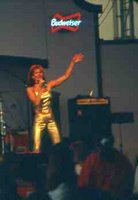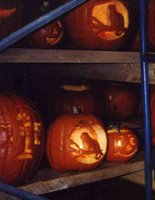

My son saw the Rolling Stones. For free. And doesn’t entirely realize how cool that is. He came home from school and said, “Kevin’s got seven extra tickets (no, I don’t know how) to the Rolling Stones tomorrow night. Can I go? We’re just gonna stay for the opening act, Kanye West.”
The “tomorrow night” in question was a school night, but this was the Stones. They’d brought their Bigger Bang concert to Gillette Stadium outside Boston. Were I to say no, I’d be haunted for the rest of my life every time the radio played “Brown Sugar.” After giving both permission and the mandatory no-drinking-and-driving-if-there’s-a-problem-call-and-I’ll-come-get-you speech, I secretly hoped Adam and his friends would, after communing with Kanye, stick around for at least a little jumpin’ jack flash.
Concert night came, and at 9:45 my phone rang. “Mom!” yelled Adam into his cellphone above the musical tidal wave in the background. “We’re gonna stay for a few more sets!” I was delighted. I wasn’t hearing the Stones live, but my 17-year-old son was, and I went back to bed humming some vicariously-enjoyed “Angie” as a lullaby.
Adam got home just before midnight (this is a great kid). I bolted into the dark hallway and said, “So? Was it awesome?” Adam held up his cellphone and played video of Mick and the men pumping out “Tumblin’ Dice.” The kids had been so close to the stage that, had there been no volume to the video playing on this lilliputian screen, you could’ve identified the song by reading Mick’s pouty lips.
“Yeah! Awesome. We were acknowledged by Kanye West!”
“What? That’s great... but... Just look at this!” I pointed to the tiny cellphone concert. “You saw the Rolling Stones! One of the greatest bands in rock 'n roll history!"
“Yeah. I know. We saw the Rolling Stones. But we were acknowledged by Kanye West.”
Fair enough. Then I learned the kids had used only five of Kevin’s seven tickets. What did Kevin do with the other two? “Sold them to a guy in the parking lot for twenty bucks.”
Oh, the pain. “Tell Kevin if I’d have known there were extras I’d have given him a hundred bucks apiece. And I wouldn’t have driven with you guys nor sat anywhere near you...”
I thought about how close I’d been to maybe seeing the Stones, then realized how long it’d been since I’d been to any concert. Let’s see... When was the last time? Oh, right...
We were at the Calgary Stampede, the great rodeo cum carnival which, for one week each July, turns Alberta’s capital into a non-stop street party and 99.9 per cent of its good citizens into boots and bolo-wearing cowboys. Everybody, young and old, becomes a Stampeder. Calgarians and visitors start the day by parking themselves on hay bales stacked in strip mall parking lots all over the city to enjoy pancake breakfasts with big dollops of Stampede spirit on the side. Stampede is in the air. It's everywhere, inescapable. Musicians in Stetsons and big silver belt buckles tap their toes on the concrete in street corners and pedestrian areas all over the city. Even run of the mill salutations like "Have a nice day" or "See you later" are temporarily replaced by "Have a good Stampede!" Everyone has a Stampede ticket in his pocket, and all roads and rail lines lead to the fairgrounds, where people come and go all day and all night, all week long. If you’re planning to visit Calgary, Stampede Week is the time to go.
There’s a lot to do at Stampede, from morning to midnight, so we studied the program detailing the week’s events, and everyone in the family circled his or her must-sees. Mine included Shania Twain’s performance at the giant white-topped musical tent.
On concert day, I entered the tent and scouted a spot from where I could get some good telephoto shots of Shania. As she twanged and sashayed her way around the stage in a leopard leotard, gold lame jumpsuit, and other comely costumes, I shot an entire 36-exposure roll of slides. I noticed folks in the audience eying me with amused looks, and I thought, What? What are you looking at? She’s famous. I want pictures.
When the family reconvened in our hotel room later that afternoon, I said, “Well, I saw Shania Twain.”
Dana, swallowing a smile, said, “No, mom, actually you didn’t,” and handed me the marked-up program.
Had I looked at it more closely before trotting off to the music tent I would have known I’d just burned a roll of expensive Fujichrome on a you-won’t be-able-to-tell-the-difference Shania impersonator, the lovely and talented Shania Twin.
www.LoriHein.com



